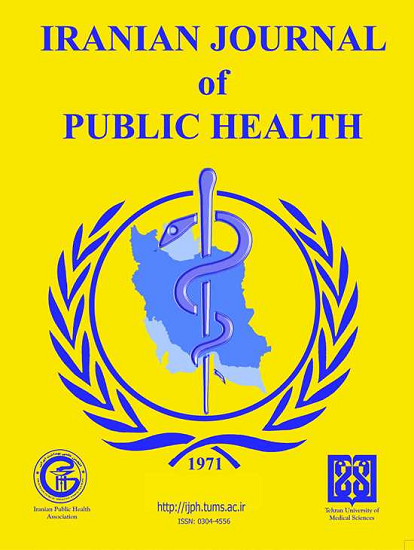Iran’s Leap into the Future; an Exploration of Tissue Engineering Companies: Review Article
Abstract
Background: This review represents the first comprehensive compilation of data on Iranian commercial, service, and research entities in the field of tissue engineering up to 2024.
Methods: Through an extensive search of official websites, 56 companies were identified: 29 commercial enterprises, 17 service providers, and 10 research institutions. The majority (64%) of these companies are headquartered in Tehran, with many established post-2004.
Results: Biomaterials account for half of the product portfolio, with 38% of ongoing research focused on this area. Although cell-based products currently make up only 12% of offerings, they are the subject of 38% of current research, indicating significant potential for future growth.
Conclusion: This study provides a detailed overview of the development and future prospects of Iran's tissue engineering sector. The key conclusion emphasizes the need for an expanded focus on cell-based therapies and the establishment of stronger regulatory frameworks to facilitate the commercialization of innovative products. The review identifies key research gaps and proposes directions for future study, utilizing a descriptive methodology with in-depth data analysis and theoretical discussion.
2. Lavik E, Langer R (2004). Tissue engineering: current state and perspectives. Appl Microbiol Biotechnol, 65 (1):1-8.
3. de Morree A, Rando TA (2023). Regulation of adult stem cell quiescence and its functions in the maintenance of tissue integrity. Nat Rev Mol Cell Biol, 24 (5):334-354.
4. Farag MM (2023). Recent trends on biomaterials for tissue regeneration applications. J Mater Sci, 58 (2):527-558.
5. Maresca JA, DeMel DC, Wagner GA, Haase C, Geibel JP (2023). Three-dimensional bioprinting applications for bone tissue engineering. Cells, 12 (9):1230.
6. Lam EHY, Yu F, Zhu S, Wang Z (2023). 3D bioprinting for next-generation personalized medicine. Int J Mol Sci, 24 (7):6357.
7. Wu CA, Zhu Y, Woo YJ (2023). Advances in 3D bioprinting: Techniques, applications, and future directions for cardiac tissue engineering. Bioengineering, 10 (7):842.
8. Langer R, Vacanti JP (1993). Tissue Engineering. ed. Science.
9. Osanloo M, Noori F, Tavassoli A, et al (2023). Effect of PCL nanofiber mats coated with chitosan microcapsules containing cinnamon essential oil for wound healing. BMC Complement Med Ther, 23 (1):84.
10. Ai A, Saremi J, Ebrahimi-Barough S, et al (2022). Bridging potential of Taurine-loading PCL conduits transplanted with hEnSCs on resected sciatic nerves. Regen Ther, 21:424-435.
11. Fereydouni N, Movaffagh J, Amiri N, et al (2021). Synthesis of nano-fibers containing nano-curcumin in zein corn protein and its physicochemical and biological characteristics. Sci Rep, 11 (1):1902.
12. Fereydouni N, Zangouei M, Darroudi M, et al (2023). Antibacterial activity of chitosan-polyethylene oxide nanofibers containing silver nanoparticles against aerobic and anaerobic bacteria. Journal of Molecular Structure, 1274 (1):134304.
13. Sajjadi S (2008) Shahri Sokhta’s artificial eye, cultural heritage of Sistan & Baluchistan. Forohar, Tehran,
14. Mirzadeh H, Mohagheghi S, Ahmadi H, et al (2000). Cartilage tissue engineering for ear as in rabbit model with perforated polyurethane prosthesis: in vivo assay. Iranian Polymer Journal, 9 (2):73-80.
15. Fathi MH, Salehi M, Saatchi A, Mortazavi V, Moosavi SB (2003). In vitro corrosion behavior of bioceramic, metallic, and bioceramic-metallic coated stainless steel dental implants. Dent Mater, 19 (3):188-198.
16. Salour H, Owji N, Farahi A (2003). Two-stage procedure for management of large exposure defects of hydroxyapatite orbital implant. Eur J Ophthalmol, 13 (9-10):789-93.
17. Gharravi AM, Orazizadeh M, Hashemitabar M, et al (2012). Status of tissue engineering and regenerative medicine in Iran and related advanced tools: Bioreactors and scaffolds. J Biomed Sci Eng, 5 (4):217-227.
18. Gheisari Y, Baharvand H, Nayernia K, Vasei M (2012). Stem cell and tissue engineering research in the Islamic Republic of Iran. Stem Cell Rev Rep, 8 (3):629-639.
19. Mobini S, Khanmohammadi M, Heidari-Vala H, et al (2015). Tissue engineering and regenerative medicine in Iran: Current state of research and future outlook. Mol Biotechnol, 57 (7):589-605.
20. Bertram TA, Johnson PC, Tawil BJ, et al (2015). Enhancing tissue engineering and regenerative medicine product commercializ-ation: the role of science in regulatory decision-making for the TE/RM product development. Tissue Eng Part A, 21 (19-20):2476-2479.
21. Kim YS, Smoak MM, Melchiorri AJ, Mikos AG (2019). An overview of the tissue engineering market in the United States from 2011 to 2018. Tissue Eng Part A, 25 (1-2):1-8.
22. Nerem RM (2010). Regenerative medicine: the emergence of an industry. J R Soc Interface, 7 Suppl 6(Suppl 6):S771-5.
23. Treetta company [Available from: https://www.treetta.com/
24. Tissue Regeneration corporation [Available from: https://trcir.com
25. Fanavaran nano meghyas [Available from: http://fnm.ir
26. Royan Stem Cell Technology [Available from: https://www.rsct.ir
27. Jaklenec A, Stamp A, Deweerd E, Sherwin A, Langer R (2012). Progress in the tissue engineering and stem cell industry “are we there yet?”. Tissue Eng Part B Rev, 18 (3):155-166.
28. Bertram TA, Tentoff E, Johnson PC, et al (2012). Hurdles in tissue engineering/regenerative medicine product commercialization: a pilot survey of governmental funding agencies and the financial industry. Tissue Eng Part A, 18 (21-22):2187-2194.
29. Ronfard V, Vertes AA, May MH, et al (2017). Evaluating the past, present, and future of regenerative medicine: a global view. Tissue Eng Part B Rev, 23 (2):199-210.
30. Lysaght MJ, Jaklenec A, Deweerd E (2008). Great Expectations: Private Sector Activity in Tissue Engineering, Regenerative Medicine, and Stem Cell Therapeutics. Tissue Eng Part A, 14 (2):305-315.
| Files | ||
| Issue | Vol 54 No 2 (2025) | |
| Section | Review Article(s) | |
| DOI | https://doi.org/10.18502/ijph.v54i2.17904 | |
| Keywords | ||
| Tissue engineering Commercial Service Research Company | ||
| Rights and permissions | |

|
This work is licensed under a Creative Commons Attribution-NonCommercial 4.0 International License. |





